When it comes to elegant yet approachable poultry dishes, few options can match the sophisticated charm of a perfectly roasted Cornish hen. Furthermore, these small game birds offer an impressive presentation that transforms any ordinary dinner into a special occasion. Additionally, Cornish hens provide the perfect portion size for individual servings, making them ideal for intimate dinners or special celebrations.
Originally developed in the 1950s, Cornish hens are actually a crossbreed between Cornish and White Plymouth Rock chickens. Moreover, despite their name, these birds are typically harvested young, resulting in incredibly tender and flavorful meat. Consequently, they’ve become a favorite among home cooks who want to create restaurant-quality meals in their own kitchens.
Table of Contents
Why I Love This Recipe
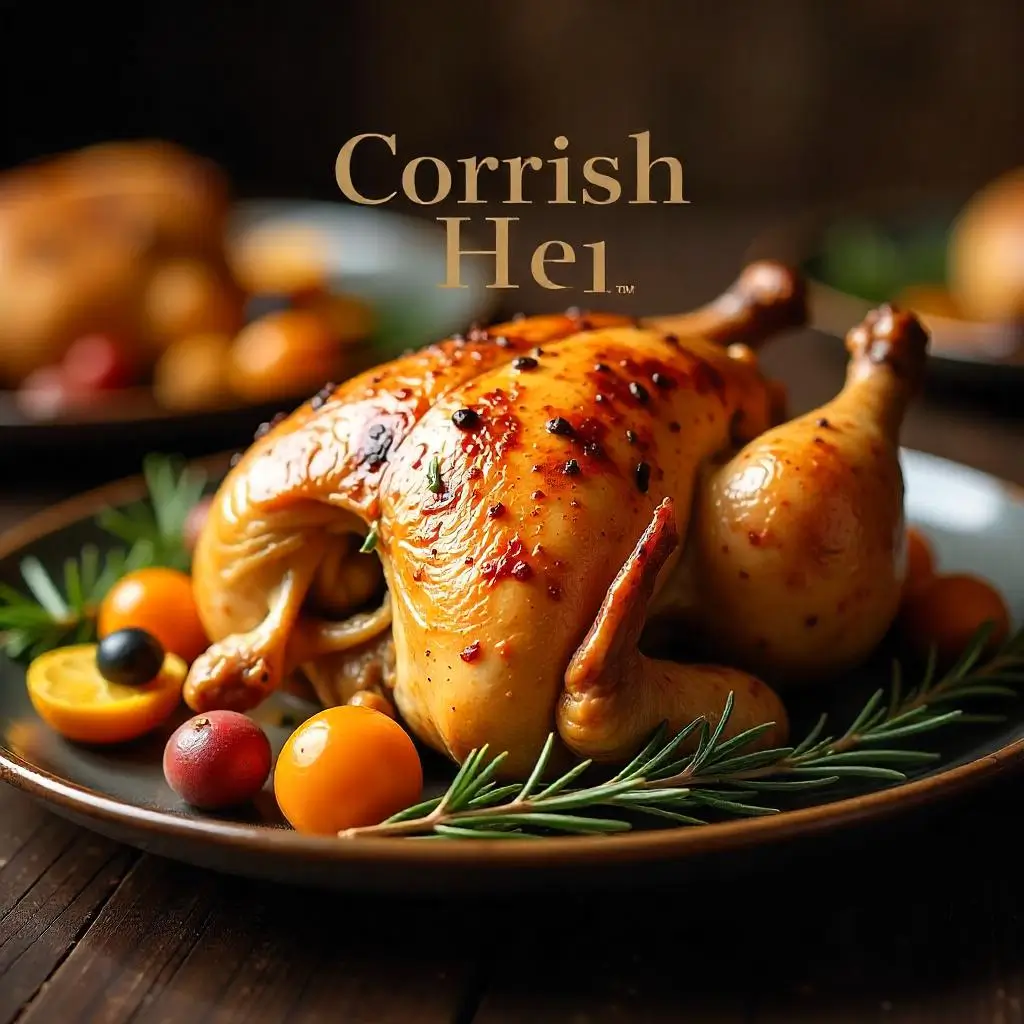
First and foremost, this Cornish hen recipe holds a special place in my heart because it never fails to impress guests while remaining surprisingly simple to execute. In addition, the combination of herbs and seasonings creates an aromatic experience that fills your entire kitchen with incredible scents. Furthermore, the crispy golden skin paired with juicy, succulent meat makes every bite absolutely divine.
What’s more, this recipe is incredibly versatile and can be adapted to suit various flavor preferences. Similarly, the cooking method ensures consistent results every time, making it perfect for both novice and experienced cooks. Additionally, the presentation factor cannot be overstated – serving individual whole birds creates an elegant dining experience that feels truly special.
Most importantly, however, this recipe brings families together around the dinner table, creating lasting memories over a beautifully prepared meal. Consequently, it has become my go-to choice for holidays, anniversaries, and other meaningful occasions.
Key Ingredients
To create this exceptional dish, you’ll need several essential components that work harmoniously together. First, the Cornish hens themselves serve as the star ingredient, typically weighing between 1-2 pounds each. Additionally, fresh herbs like rosemary, thyme, and sage provide aromatic complexity that elevates the overall flavor profile.
Furthermore, high-quality butter plays a crucial role in achieving that coveted golden-brown skin while keeping the meat incredibly moist. Similarly, garlic and lemon add bright, complementary flavors that enhance rather than overpower the natural taste of the poultry. Moreover, kosher salt and freshly ground black pepper form the foundation of the seasoning blend.
In addition to these primary ingredients, root vegetables such as carrots, potatoes, and onions not only add nutritional value but also absorb the delicious pan drippings during cooking. Consequently, they become perfectly caramelized and serve as an ideal accompaniment to the main dish.
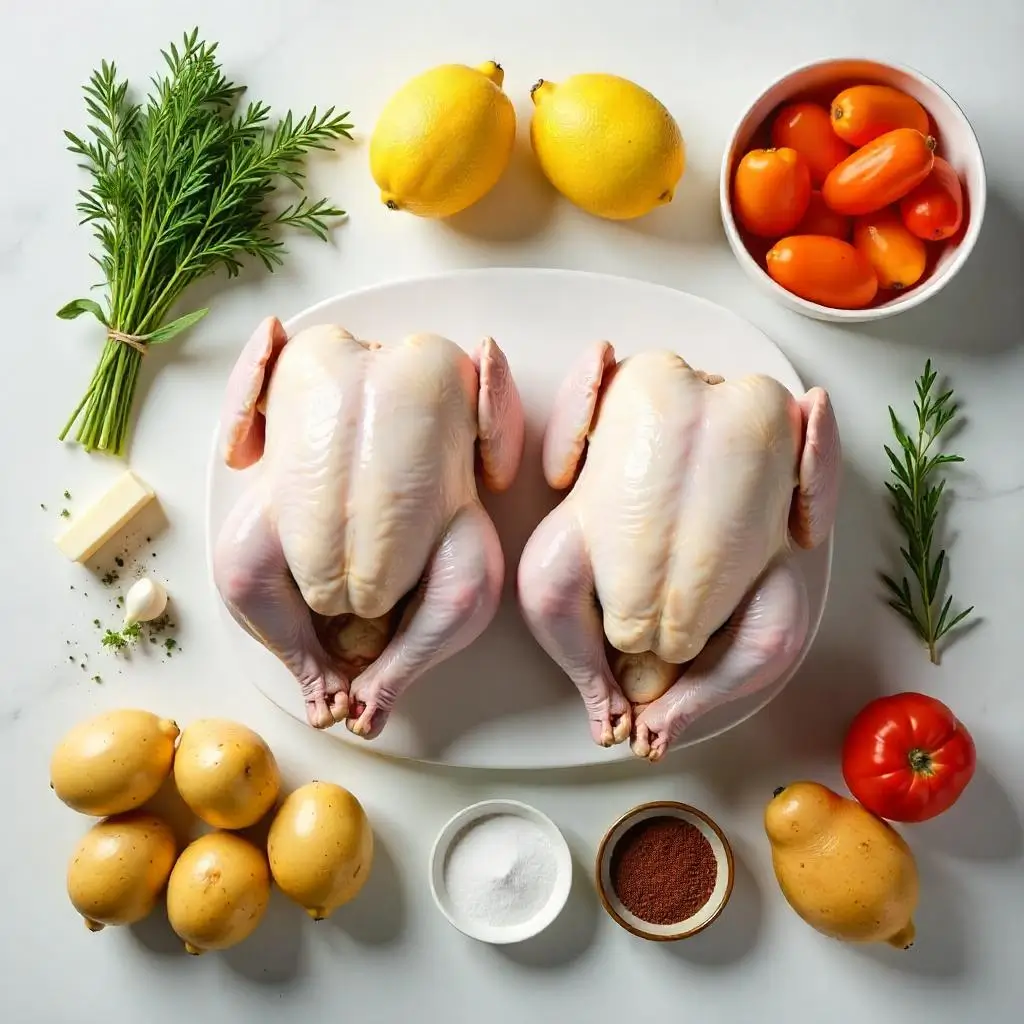
Step-by-Step Instructions
Preparation Phase
Initially, begin by preheating your oven to 425°F (220°C), as proper temperature is crucial for achieving optimal results. Meanwhile, remove the Cornish hens from the refrigerator and allow them to come to room temperature for approximately 30 minutes. Subsequently, pat each bird completely dry with paper towels, as moisture can prevent proper browning.
Next, carefully remove any giblets from the cavity and reserve them for making gravy if desired. Then, season the cavity of each hen generously with salt and pepper before stuffing with fresh herb sprigs and lemon quarters.
Seasoning and Preparation
Following the initial preparation, create an herb butter mixture by combining softened butter with minced garlic, chopped fresh herbs, salt, and pepper. Afterward, gently loosen the skin over the breast meat and spread some of the herb butter directly onto the meat. Additionally, rub the remaining mixture all over the outside of each bird, ensuring even coverage.
Furthermore, truss the legs with kitchen twine to promote even cooking and maintain an attractive shape. Similarly, tuck the wing tips under the body to prevent them from burning during the roasting process.
Cooking Process
Subsequently, arrange the prepared vegetables in the bottom of a roasting pan, creating a flavorful bed for the hens. Then, place the seasoned birds breast-side up on top of the vegetables, ensuring they’re not touching each other. Moreover, drizzle everything with a small amount of olive oil for additional flavor enhancement.
Next, roast the hens in the preheated oven for approximately 50-60 minutes, or until the internal temperature reaches 165°F (74°C) when measured at the thickest part of the thigh. Additionally, baste the birds every 20 minutes with the accumulated pan juices to maintain moisture and promote browning.
Final Steps
Finally, once the hens are fully cooked, remove them from the oven and tent with aluminum foil. Then, allow them to rest for 10-15 minutes before serving, as this resting period allows the juices to redistribute throughout the meat. Meanwhile, you can prepare any additional sides or make gravy from the pan drippings.
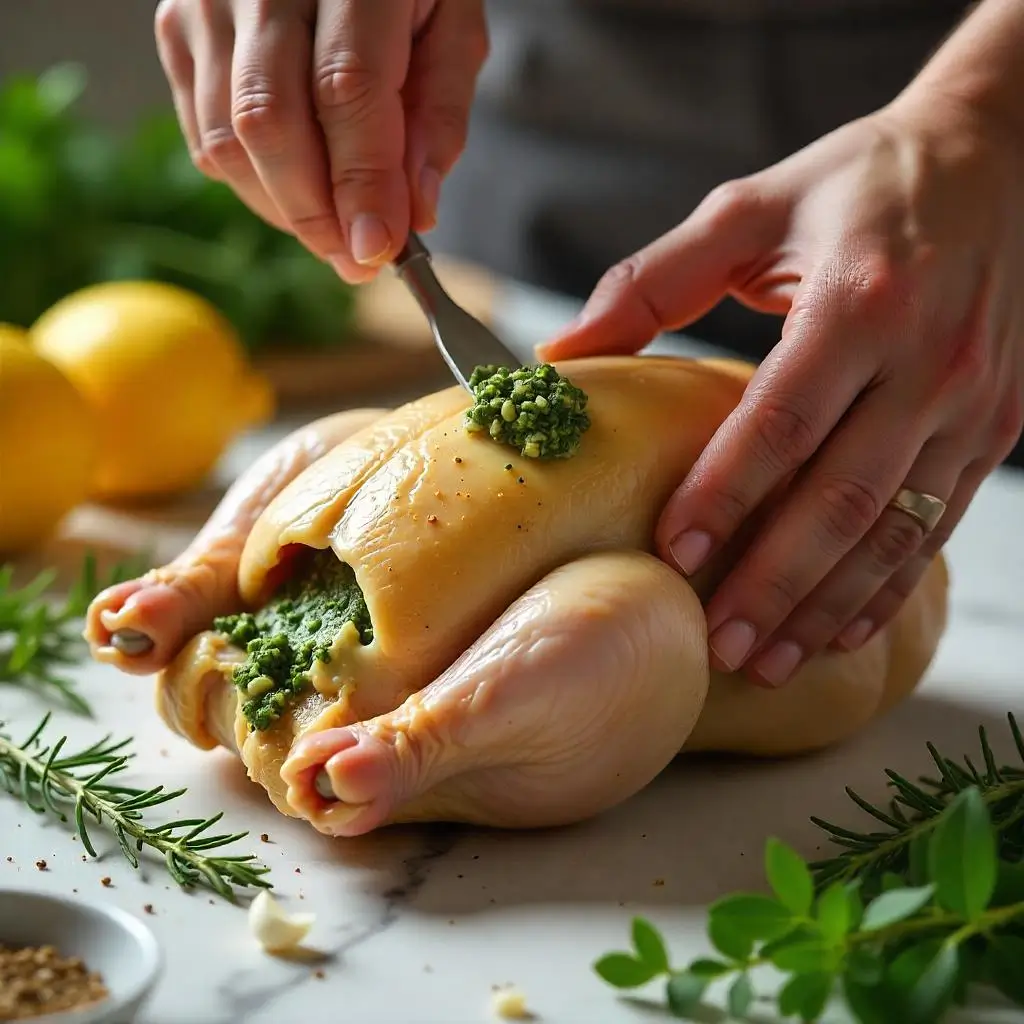
Storage Guidelines
Proper storage is essential for maintaining both food safety and quality. Initially, allow any leftover Cornish hen to cool completely before refrigerating. Subsequently, store the meat in airtight containers in the refrigerator for up to 3-4 days. Furthermore, you can freeze cooked Cornish hen for up to 2-3 months when properly wrapped.
Additionally, when reheating leftovers, ensure the internal temperature reaches 165°F (74°C) to maintain food safety standards. Moreover, adding a small amount of chicken broth during reheating helps restore moisture and prevents the meat from drying out.
Expert Tips for Success
First and foremost, investing in a reliable meat thermometer eliminates guesswork and ensures perfectly cooked results every time. Additionally, brining the hens for 2-4 hours before cooking adds extra moisture and flavor throughout the meat. Furthermore, scoring the skin lightly in a crosshatch pattern allows the fat to render more effectively, resulting in crispier skin.
Moreover, placing the hens on a wire rack within the roasting pan promotes better air circulation and more even browning. Similarly, rotating the pan halfway through cooking ensures uniform heat distribution. Consequently, these small adjustments make a significant difference in the final outcome.
Most importantly, however, don’t skip the resting period after cooking, as this step is crucial for achieving optimal texture and flavor distribution.
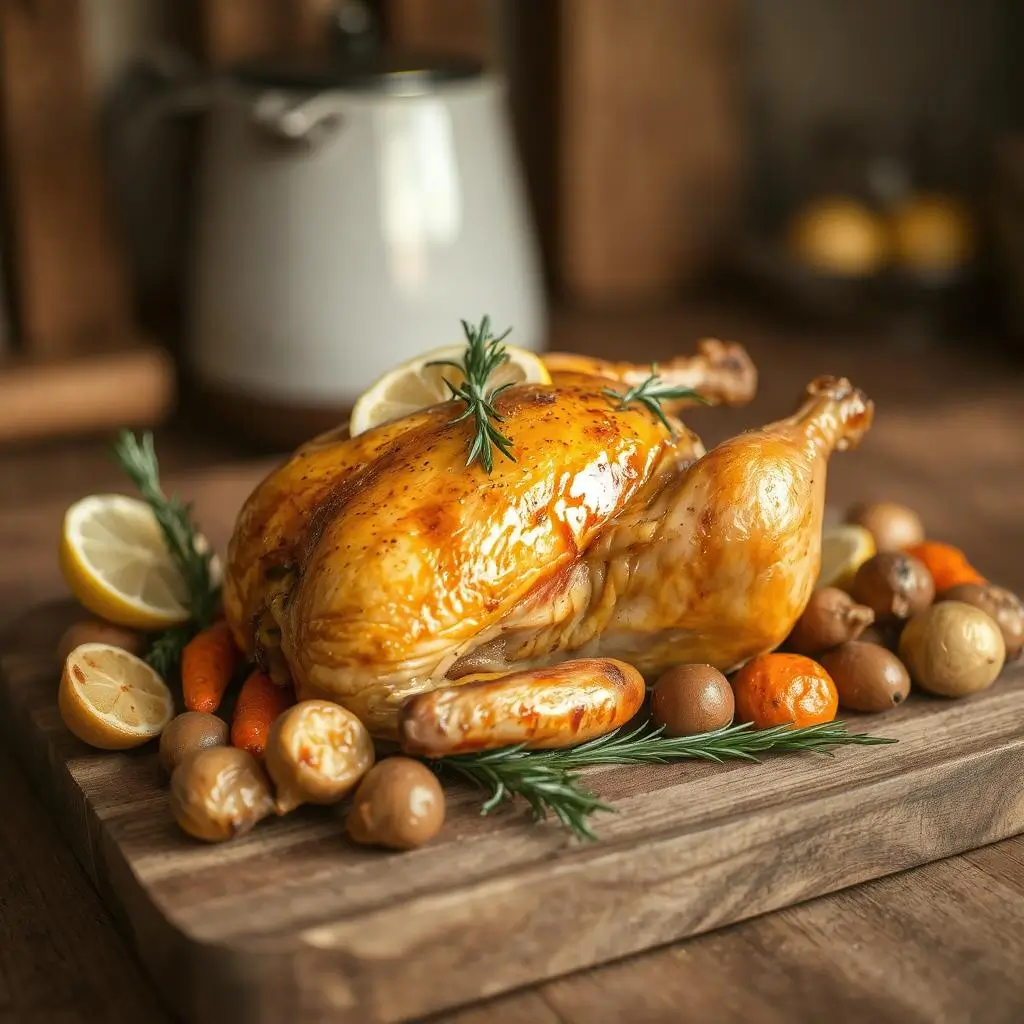
Detailed Nutrition Information
Per Serving (1/2 Cornish Hen with vegetables)
- Calories: 285
- Sugars: 4.2g
- Protein: 28.5g (57% DV)
- Total Fat: 15.2g (23% DV)
- Saturated Fat: 5.8g (29% DV)
- Monounsaturated Fat: 6.1g
- Polyunsaturated Fat: 2.4g
- Carbohydrates: 8.7g (3% DV)
- Dietary Fiber: 2.1g (8% DV)
More Recipe Ideas
- Pepper Steak
- Tuscan Chicken
- Old Fashioned Salmon Patties
- Bottom Round Roast
- Smoky and Succulent Chipotle Steak
- Boston Baked Beans
- Crab Brulee
- White Gravy
- Chicken Tetrazzini
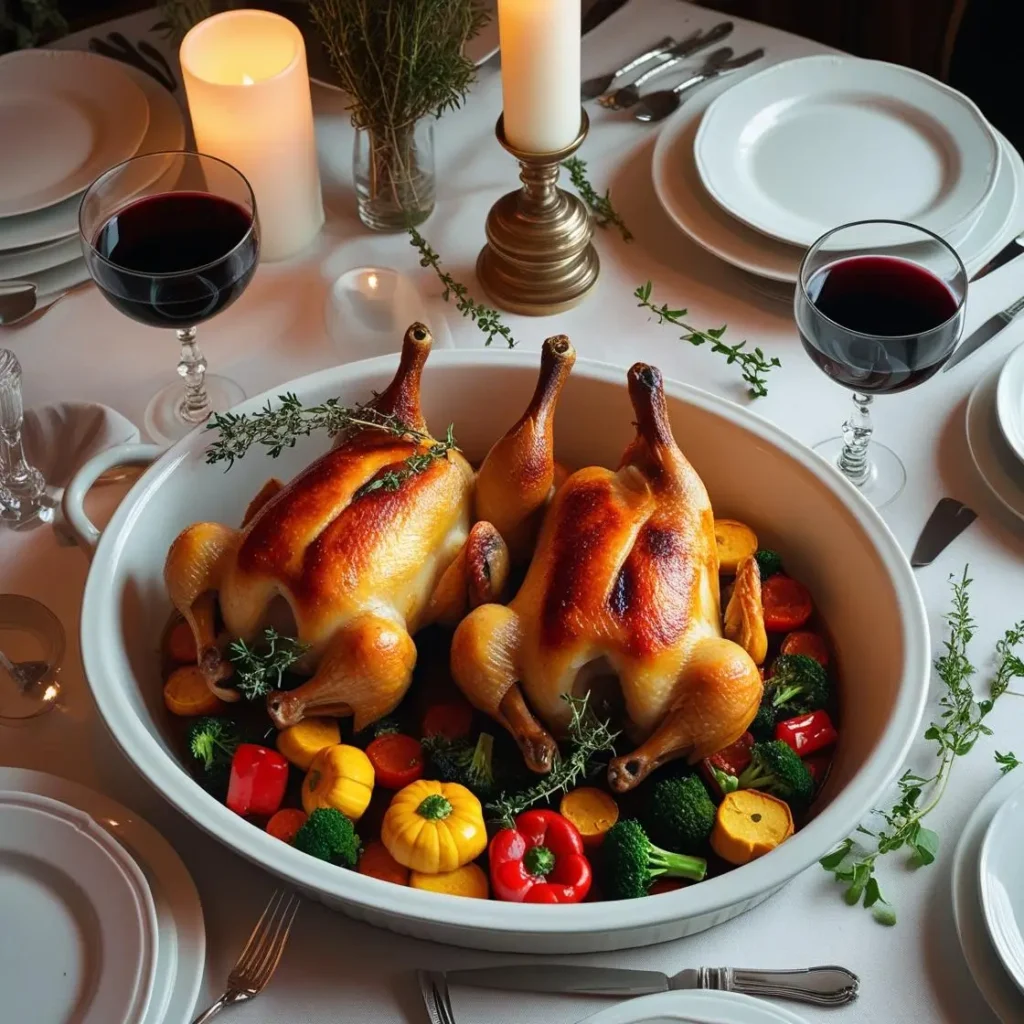
In conclusion, mastering the art of roasted Cornish hen opens up a world of elegant dining possibilities right in your own home. Furthermore, this recipe demonstrates that sophisticated cuisine doesn’t necessarily require complicated techniques or exotic ingredients. Instead, it relies on quality ingredients, proper technique, and attention to detail.
Additionally, the versatility of this dish makes it suitable for various occasions, from intimate date nights to holiday celebrations. Moreover, the impressive presentation ensures that your guests will be thoroughly impressed with your culinary skills. Most importantly, however, the delicious results will keep everyone coming back for more.
Ultimately, this Cornish hen recipe represents the perfect balance of elegance and accessibility, making it an invaluable addition to any home cook’s repertoire. Consequently, I encourage you to try this recipe and experience the joy of creating restaurant-quality meals in your own kitchen.
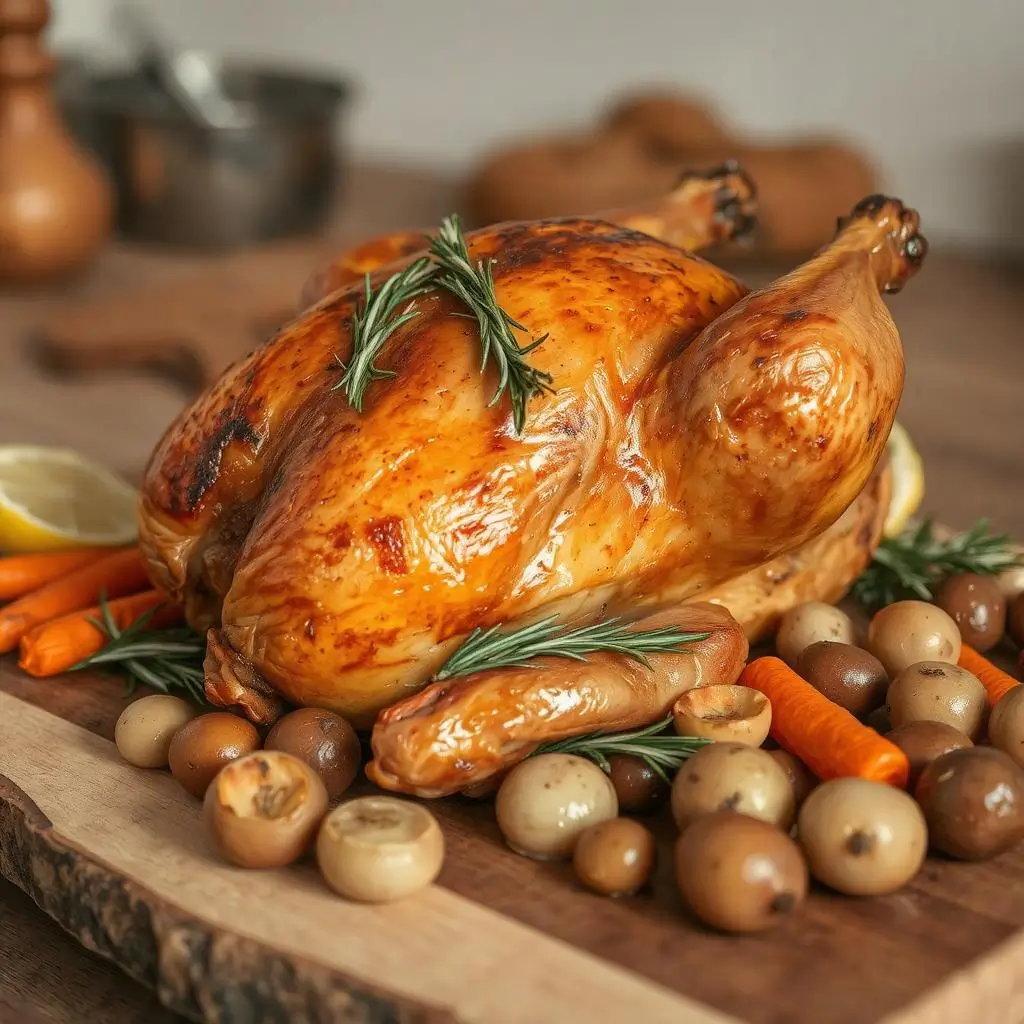
How to Cook a Perfect Cornish Hen
Description
“Master the perfect herb-roasted Cornish hen recipe with crispy golden skin and juicy meat. Complete guide with step-by-step instructions and expert tips.”
Ingredients
Instructions
- Initially, preheat oven to 425°F (220°C).
- Next, pat hens dry and remove giblets. Then, season cavities with salt and pepper.
- Meanwhile, combine butter, garlic, herbs, salt, and pepper in a bowl.
- Subsequently, loosen breast skin and spread herb butter underneath. Additionally, rub remaining mixture over entire surface.
- Furthermore, stuff cavities with lemon quarters and herb sprigs. Then, truss legs with kitchen twine.
- Afterward, arrange vegetables in roasting pan and place hens on top.
- Next, roast for 50-60 minutes until internal temperature reaches 165°F (74°C).
- During cooking, baste every 20 minutes with pan juices.
- Finally, rest for 10-15 minutes before serving.
Notes
- Additionally, brining for 2-4 hours enhances flavor and moisture
Furthermore, using a meat thermometer ensures perfect doneness
Moreover, resting time is crucial for optimal texture